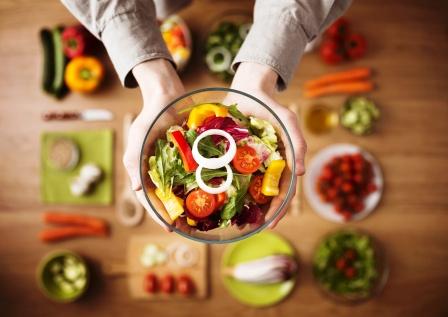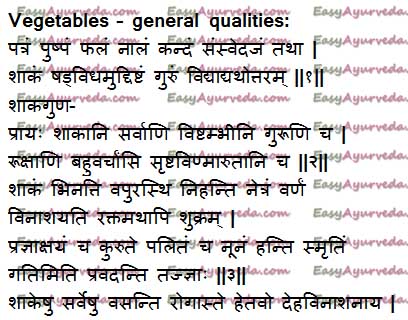13 Hazards And Precautions Related To Vegetables As Per Ayurveda

This article is by Dr M S Krishnamurthty MD (Ayu), PhD.
General notion is that all that are green are safe. But Ayurveda recommends a path of caution. An ideal diet should contain sufficient amounts of grains, fruits, oils, fats, carbohydrates and of course vegetables. Mere taking vegetables throughout the day is not an Ayurvedic advice.
Table of Contents
Importance of greens and vegetables
- More organic and hence safe
- Easily digestible
- More accustomed since from the beginning
- More nutritive
- Less toxic, less incompatible
- Cheaper
- Good for both healthy and diseased
- Fair to all age group and both the genders
- Less burden to the body
- Supplements most of the dietary needs of the body etc.
Even though these are the most accepted and partially proved facts, people often give reason that all that are green are good for health.
They often point out age old Ayurvedic treatises in this regard.

But it is very important to note that even the ayurvedic literature elaborate description as well as criticism can be found in this regard. One such verse from Bhavaprakasha nighantu is explained here below –
Classical reference

Classical version: Reference – Bhavaprakasha nighantu/Shakavarga
Qualities of vegetables
Meaning –
Leaves, flowers, fruits, stem, stalk, tuber or rhizomes and mushrooms are different types of Shaka – vegetables. They are increasingly heavier to digest. Leaves are easiest to undergo digestion and mushrooms are the hardest.
All kinds of vegetables in general are –
Vishthambhi – Block the channels
Guru – cause heavy to the body
Ruksha – leads to dryness
Bahuvarcha – increases the amount of faecal matter
Srishtha vit – increases the bulk of feces
Srishtha maruta – Anti flatulent
Mere vegetable intake for long duration (of same vegetables?) may lead to –
Asthibhedaka – Which takes away the strength of the bones (leads to calcium depletion?)
Netrashakti nashaka – reduces the strength of the eyes
Varnavinashaka – takes away the complexion
Rakta – shukra nashaka – may lead to anemia and oligospermia
Prajnakshaya – Reduces the intellect
Palityakaraka – leads to grayness of the hair
Smaranashaktinashaka – declines the memory power
Yes., it is a strange kind of reference beyond the common thinking of the traditional people, classical ayurvedists and even the nutritionists and dietitians.
It is a matter of fact to remind and recollect – every good thing may not be good throughout or prolonged use may not do good and alone vegetables (mere) may do some harm too.
What a nice thing in classics! Because mere vegetables cannot fulfill the dietary needs and they alone are the balanced diet entities.
It means –
Along with vegetables, we have to have grains, seeds, nuts, fruits, beans, juices, pulses, oils and fats etc to make the meal more complete.
This also indicate that, if soil is contaminated with heavy metals, poisoning, etc, those hazardous qualities will be transferred to the vegetables. Hence, it makes more sense to boil them and eat, rather than raw.
After these precautions, Bhavamishra, the author of the above text book goes on to explain the health benefits of each vegetables. This means, they do carry their own advantages. But it is not a good idea to fill the meals only with them.
Click to consult Dr MS Krishnamurthy MD (Ayu), PhD








